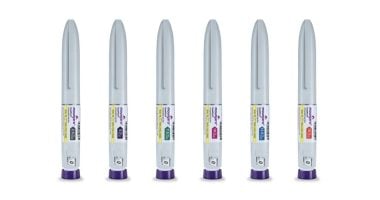Sulphonylureas are a class of oral (tablet) medications that control blood sugar levels in patients with type 2 diabetes by stimulating the production of insulin in the pancreas and increasing the effectiveness of insulin in the body
They are generally taken once or twice a day, with or shortly before a meal, and can be taken on their own or prescribed for use alongside other diabetes drugs such as metformin
Drugs in this class
The following drugs are all in the sulphonylureas class (trade name first, generic name in brackets):
- Amaryl (Glimepiride)
- Daonil (Gilbenclamide)
- Diamicron (Gilclazide)
- Diamicron MR (Gilclazide)
- Glibenese (Glipizide)
- Minodiab (Glipizide)
- Tolbutamide (Tolbutamide)
How do sulphonylureas work?
Sulphonylureas are insulin secretagogues, which means they work by causing the body to secrete insulin.
Another class of diabetes drugs which works in this way is the prandial glucose regulators class.
Sulphonylureas bind to a channel of proteins in the pancreas (ATP-sensitive potassium channel).
This triggers a sequence of events within the cells that leads to an increase in the amount of insulin that is produced by pancreatic beta cells
Who are sulphonylureas suitable for?
Sulphonylureas are suitable for people with type 2 diabetes with blood glucose levels that are higher than the recommended levels (an HbA1c above 6.5%) usually once metformin has been prescribed.
Sulphonylureas are not appropriate for people with significantly diminished ability to produce insulin, such as those with type 1 diabetes or that have had a pancreatectomy.
Benefits
The primary benefit of sulphonylureas is their effect on increasing insulin secretion and therefore helping to reduce blood glucose levels.
Side effects
Sulphonylureas are not recommended for people who are overweight or obese, as their mode of action (increase in insulin production and secretion) means that weight gain can be a relatively common side effect.
Their effect on insulin levels also means users are at increased risk of hypoglycaemia (low blood sugar), although this risk is reduced with newer sulphonylureas such as glimepiride.
In addition, some users may suffer an allergic reaction during the first six weeks to eight weeks of treatment, resulting in itchy red skin/skin rashes. If this happens, you might need to switch to another anti-diabetes drug.






